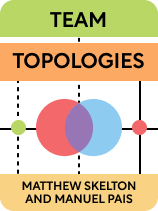

This article is an excerpt from the Shortform book guide to "Team Topologies" by Matthew Skelton and Manuel Pais. Shortform has the world's best summaries and analyses of books you should be reading.
Like this article? Sign up for a free trial here.
Does your organization have a team that’s dedicated to infrastructure services? Could your organizational resources be handled more efficiently?
In Team Topologies, platform teams are one of the four team types recommended by software engineers Matthew Skelton and Manuel Pais. These teams handle underlying organizational functions such as cloud storage and internal security.
Keep reading to learn about the purpose and design of platform teams and how they intersect with all aspects of the organization.
Team Topologies: Platform Teams
According to Team Topologies, platform teams produce and maintain the infrastructure and services that all of your teams use to communicate with each other and perform tasks. Examples of these kinds of services include your internal security tools, remote work applications, cloud storage solutions, and internal network design.
Your platform teams should focus on producing interfaces that are easy for the other teams to use, which will in turn help those teams work more efficiently. Platform teams can accomplish this by creating easy-to-read webpages and manuals that help other teams make effective use of their infrastructure.
(Shortform note: When your platform teams create easy-to-use platforms, you increase engineer efficiency and improve employee retention. By creating a more streamlined developer experience throughout your organization, platform teams are able to positively impact company culture, which in turn increases workplace satisfaction and gives your organization a competitive edge in keeping talent.)
The authors say that, in addition to ensuring ease of use, your platform teams should focus on making their products as reliable as possible, as these products are often used internally across many teams. Due to the effects of scale, even small infrastructure bugs can cause delays across your organization.
(Shortform note: One of the most important reliability factors for your platform teams to consider is downtime. According to some estimates, an hour of downtime at a large firm can cause losses of as much as $1 million. To avoid losing out on revenue, encourage your platform teams to patch services without downtime whenever possible and to intensively stress test new features before deployment to avoid surprise outages.)
To avoid wasting resources on unnecessary features, Skelton and Pais suggest instructing your platform teams to create the simplest possible infrastructure that meets your organization’s needs.
(Shortform note: Depending on your organization’s needs, your platform teams should consider the simplicity of low-code and no-code development platforms. Low-code platforms are exactly what they sound like—by using visual tools, these platforms make it easier for individuals without much coding experience to create and edit software. If your organization is just getting started and doesn’t yet employ many veteran programmers, your platform teams can deploy low-code platforms to help your other teams operate efficiently until they have more experience.)
If your infrastructure software becomes large enough, you may need to assign several teams to maintain and expand it. You can use the other team types to your advantage here. Treat your infrastructure like any other product and assign stream-aligned teams, enabling teams, and complicated-subsystem teams as needed. At times, you may even need to create additional platform teams to work on smaller pieces of software within your overall infrastructure.
(Shortform note: As you split responsibility for your infrastructure among multiple teams, responsibility for the user experience also gets distributed. This distribution of responsibility can sometimes lead to negligence. Journalists have noted, for instance, that rapid growth at Facebook led the company to ignore privacy and moderation issues that have plagued the platform for years. To avoid this type of issue, when splitting responsibility for infrastructure, be sure that each infrastructure team includes someone tasked with preserving and improving the user experience.)

———End of Preview———
Like what you just read? Read the rest of the world's best book summary and analysis of Matthew Skelton and Manuel Pais's "Team Topologies" at Shortform.
Here's what you'll find in our full Team Topologies summary:
- How to set up your software development teams to work as efficiently as possible
- The four types of teams you should create as a project manager
- The three main ways your teams should interact with each other






